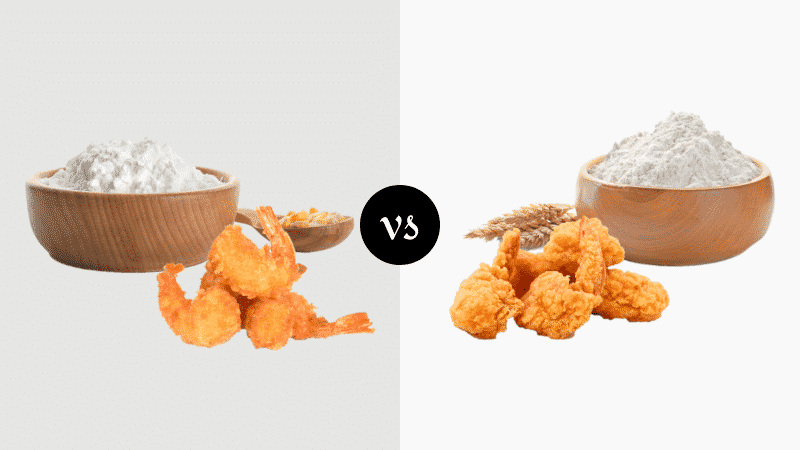
DISCLOSURE: This post may contain affiliate links, meaning when you click the links and make a purchase, I receive a commission. As an Amazon Associate I earn from qualifying purchases.
The culinary world has developed countless methods to prepare food.
From preparing and paring food for raw eating to frying, baking, simmering, roasting, grilling, and pressure cooking – there’s an ever-growing array of processes available to the avid cook.
Frying is, without a doubt, one of the world’s favorite ways to cook. Out of oil and fat, most cooks opt for the versatility of cooking oil.
With temperatures reaching over 392°F, frying is one of the fastest ways to prepare food, locking in flavor while having your meal ready in a jiffy.
Fried meaty foods never go out of fashion; whether it’s fried chicken, battered fish, crumbed vegetables, or pan-fried shrimp – frying is the way to go.
If you’re a vegan, there are fried cauliflower, countless captivating potato meals, and dishes like deep-fried jalapenos that show off artistic culinary skills.
Each of these items and more require a coating which can either be cornstarch or flour.
We’ll be taking you through a comprehensive comparison of cornstarch vs flour for frying so that you always know which is best.
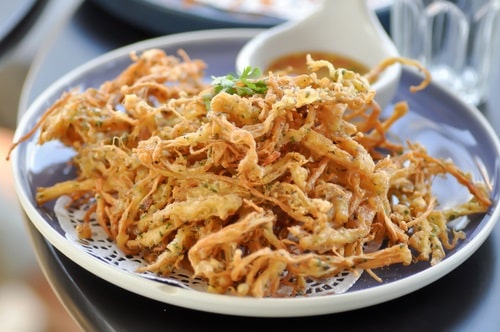
Cornstarch vs Flour For Frying
| Cornstarch | Flour | |
| Best Applications | Gluten-free coating, batter or bread & additive to flour-based mixtures for cooking and baking | Chewy bread and coatings, bready-batters, additive to balanced, crispy mixtures for cooking and baking |
| Texture | Crispy, crunchy, dry | Chewy, dense, fluffy |
| Nutrition | Carbohydrates only | High protein, high gluten |
| Frying Temperature | 350°F | 375°F |
| Substitutions | Arrowroot, rice flour, tapioca, wheat flour | Rice flour, cornstarch |
Cornstarch
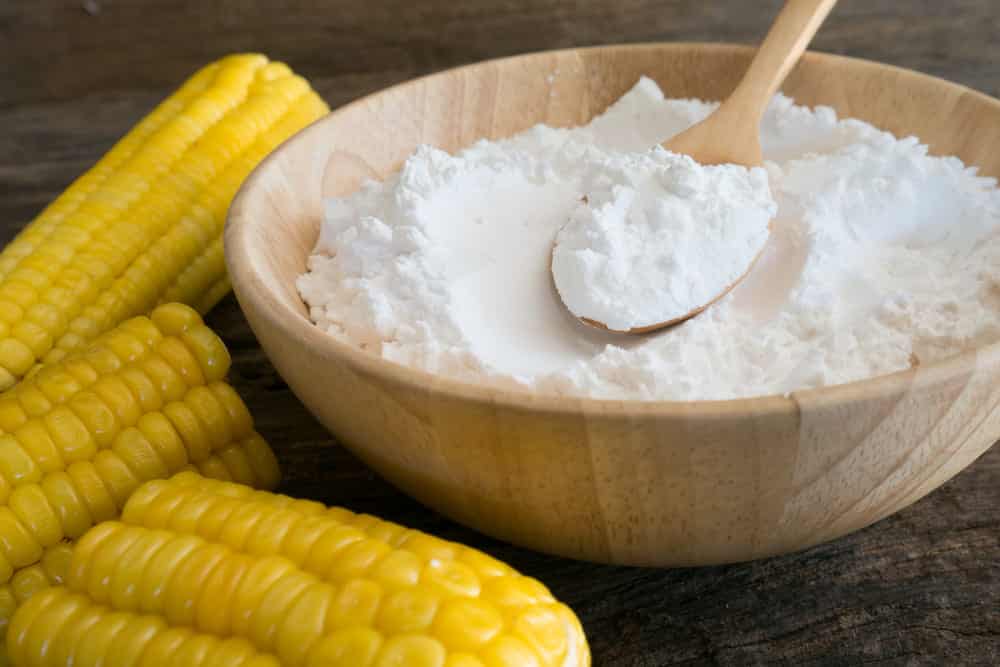
Cornstarch is a versatile pure starch that is extracted from corn kernels. The endosperm of the wheat plant is milled, and all non-starch components evaporated away, leaving nothing but carbohydrates.
Starch is essential for people who are gluten intolerant and patients who have celiac disease. It’s a wonderful thickening agent and creates a watery stock ideal for soup.
From thickening to baking and frying, cornstarch is a fantastic tasteless ingredient adding nothing but texture to each dish.
- Best Applications
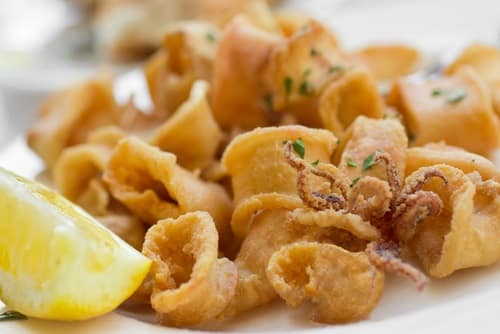
Everyone knows just how well cornstarch works as a thickener, but it’s equally outstanding for deep frying.
As pure starch, cornstarch added to a batter or coating prevents oil from being absorbed, making it perfect for total submersion and high-temperature cooking.
Cornstarch is an essential ingredient of almost all good batter, but it isn’t used by itself and is instead added to various types of flour.
- Texture
[amazon box=”B005PZLFPE”]
Fried cornstarch has a crisp, crunchy texture due to preventing the absorption of moisture. It gives battered proteins and vegetables a thin shell that sticks really well.
Coatings and breaded goods with added cornstarch in the right quantity come out melt-in-your-mouth crispy with just the right degree of hardness and crumble.
- Nutrition
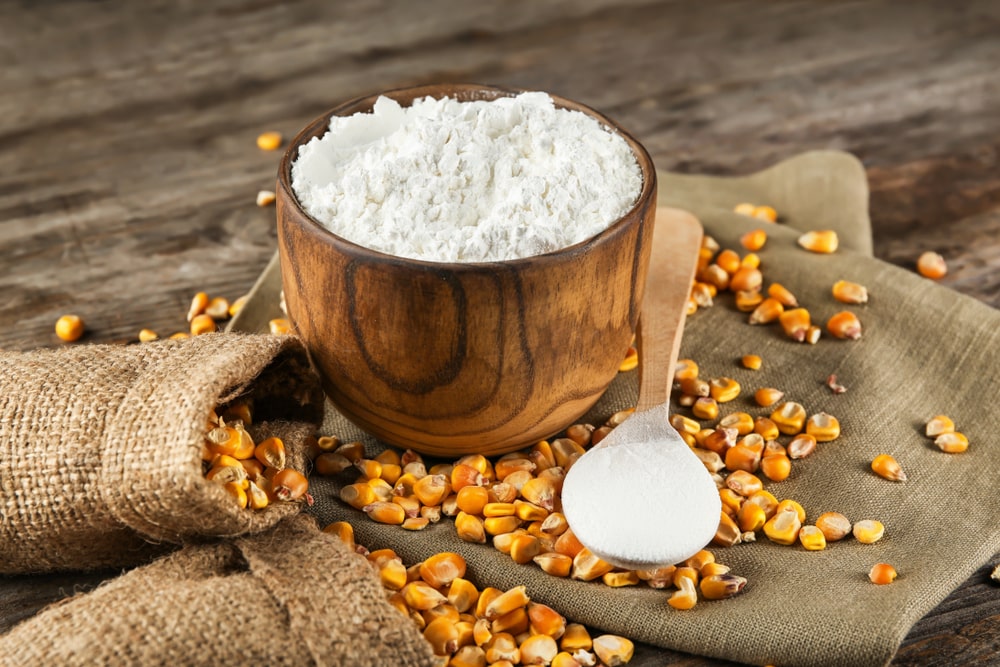
Cornstarch only contains carbohydrates. When you add it to flour, it prevents gluten formation to a degree lowering the gluten count for those who have sensitivities.
- Frying Temperature
Fried goods with batter or coating containing cornstarch typically start frying at 350°F.
- Substitutions
Wheat flour, arrowroot, potato starch, rice flour, and tapioca all make for worthy substitutes to cornstarch when frying.
Flour
Flour is obtained by grinding various grains. The powdery product of crushed wheat, seeds, or beans comes in several varieties.
Bread flour is higher in protein, all-purpose flour is one of the most commonly used, and many other tasty types range from pasta flour to semolina available. It’s a must-have ingredient in baked goods such as cakes, bread, and pastry.
Unlike cornstarch, flour is rich in protein, vitamins, and minerals, making it high in gluten and unsuitable to patients with celiac disease.
- Best Applications

Flour seals in moisture to a degree, giving food a chewy coating with a slight crispiness. By itself, fried flour comes out light and fluffy but can become oily.
Batter, breading, and other coatings become crunchy but absorb a degree of oil nonetheless. Flour is best for coating shallow fried food but is best used in combination with cornflour.
Batters, bread, and other doughs meant for shallow frying call for a higher quantity of flour in most situations.
- Texture
[amazon box=”B001HTN31Q”]
Frying a batter, bread, or coating made from flour by itself comes with a hard, chewy exterior. The texture lacks crispiness, trading of crunch for density.
The gluten in flour helps coatings cling to protein and vegetables, granting layers of breadiness.
- Nutrition
Fried flour is approximately 75% carbohydrates, 10 to 16% protein, and the rest comprises fats and salt.
Doughs and coatings made from flour are high in cholesterol and should be consumed in limitation or avoided by heart disease or circulatory issues.
- Frying Temperature
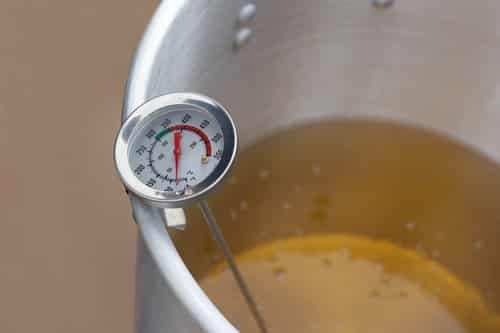
Coatings, batters, doughs, and bread start frying optimally at around 375°F.
- Substitutions
If you’re gluten intolerant, then consider using cornstarch by itself as a replacement for flour. However, if you want something denser and less crispy, giving a closer balance to wheat flour, try rice flour.
Rice flour contains no gluten and has a completely neutral taste while frying to the ideal degree of crispiness.
Why Should You Use Cornstarch In Frying?
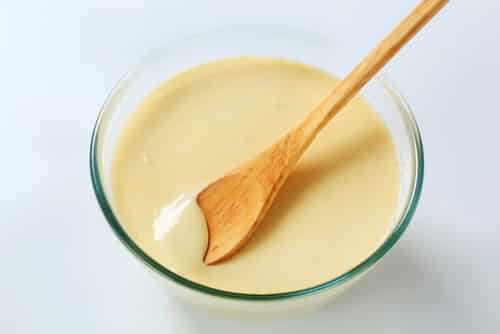
Are you looking for the crispiness of KFC or McDonalds? The secret behind the crispiness of fried chicken and so many other battered fast-food classics is cornstarch.
Adding cornstarch to your batter absorbs most of the excess moisture in the same way that it thickens soups and gravies, leaving meat and vegetables with a crunchy coating.
A thin layer of cornstarch is all it takes to leave chicken, fish, and all types of vegetables with a golden coating. The thinner and lighter your coating, the better as thick layers of cornstarch tend to end up sticky.
One of the prime benefits of cornstarch is how it’s less susceptible to absorbing freeing oil. This keeps sauces in place and flavor locked into instead of leaking out and creating a mess.
Why Should You Use Flour In Frying?
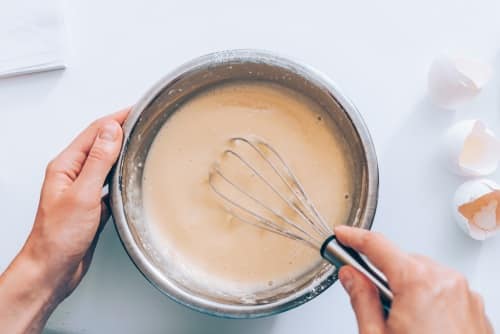
Flour contains fiber and protein, with most protein lying in gluten, gliadin, and glutenin.
Various flours have different protein levels, with all-purpose flour having the lowest average, whereas bread flour has the highest.
Batter and dough absorb oil during frying, leaving the item greasier than when using cornstarch. By itself, flour doesn’t reach an appetizing golden brown color.
The gluten in flour gives bread its chewiness and texture. In combination with eggs, flour forms a great coating.
Is A 50/50 Balance The Best Option?
The exact ratio of cornstarch to flour will depend on what you’re cooking and the temperature that your oil can reach.
However, to make sure that your fried foods always come out crispy without any oiliness, go for a 50/50 blend. There’s no chance of grease if you get your oil temperature right.
The same ratio of rice flour can alternatively be substituted, leaving you with identical results. Wheat flour is another option, but it impacts the taste and texture.
SECRET TIP
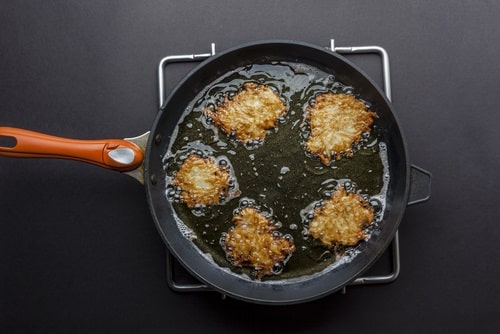
A secret method of getting crispier fried items is not to clutter your frying pan. The oil temperature drops when your pan is crowded, causing the oil to start being absorbed by the batter and the food inside.
Don’t make the mistake of frying everything at once. Leave enough space and prevent greasy, soggy fried food forever.
Cornstarch vs Flour for Frying Conclusion
Using a base blend of half cornstarch, half flour, you can begin to cook up your own perfect KFC fried chicken at home.

All that it takes to replicate famous recipes and flavors is a little experimentation with herbs and spices, modifying your core cornstarch and flour coating.
We recommend that Celiac sufferers try a balance of rice flour and cornstarch instead of 100% cornstarch to emulate the restaurant-style results of a great batter.